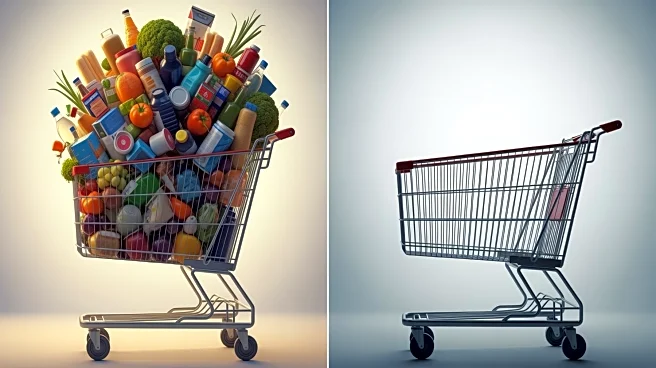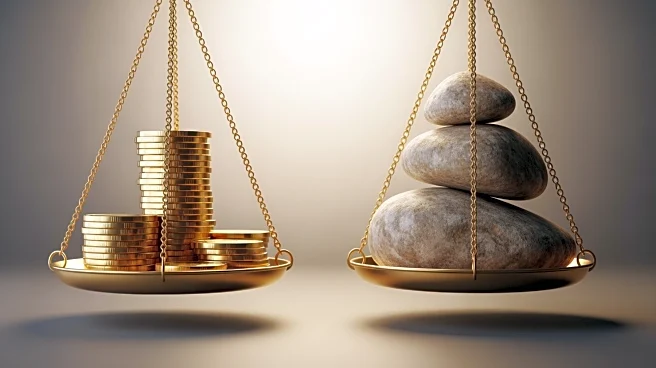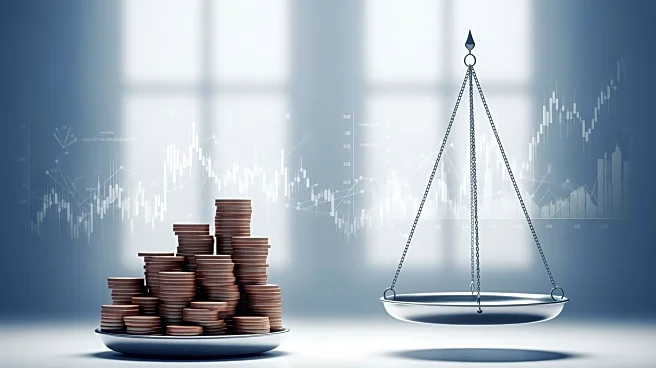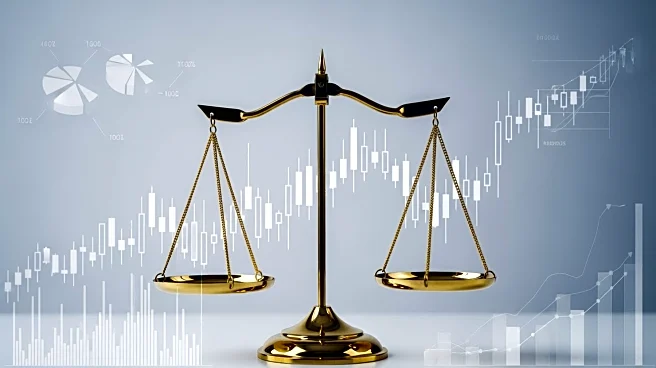What's Happening?
Recent quarterly earnings reports from consumer companies are highlighting a growing divide in spending behaviors among American consumers, often referred to as a 'K-shaped' economy. Wealthier Americans
are increasing their spending, while lower-income individuals are cutting back due to rising inflation and economic concerns. The consumer price index showed a 0.3% increase in September, with an annual inflation rate of 3%. Companies like Chipotle have reported a decline in spending among customers earning less than $100,000 annually, which constitutes a significant portion of their customer base. Meanwhile, companies such as Coca-Cola and Procter & Gamble are seeing growth driven by higher-income consumers purchasing premium products.
Why It's Important?
The divergence in consumer spending patterns underscores the economic challenges faced by lower-income Americans, who are more vulnerable to inflationary pressures. This trend could have significant implications for the U.S. economy, as consumer spending is a major driver of economic growth. Companies catering to lower-income consumers may face financial strain, while those targeting wealthier demographics could see continued growth. The Federal Reserve's recent interest rate cuts aim to address these economic disparities, but the ongoing government shutdown and potential policy changes could further impact consumer confidence and spending.
What's Next?
As more companies release their earnings reports, analysts will be closely monitoring for further evidence of the 'K-shaped' economy. The Federal Reserve's monetary policy decisions and government actions regarding the shutdown will also play crucial roles in shaping the economic landscape. Businesses may need to adjust their strategies to cater to shifting consumer behaviors, potentially leading to changes in product offerings and marketing approaches.












